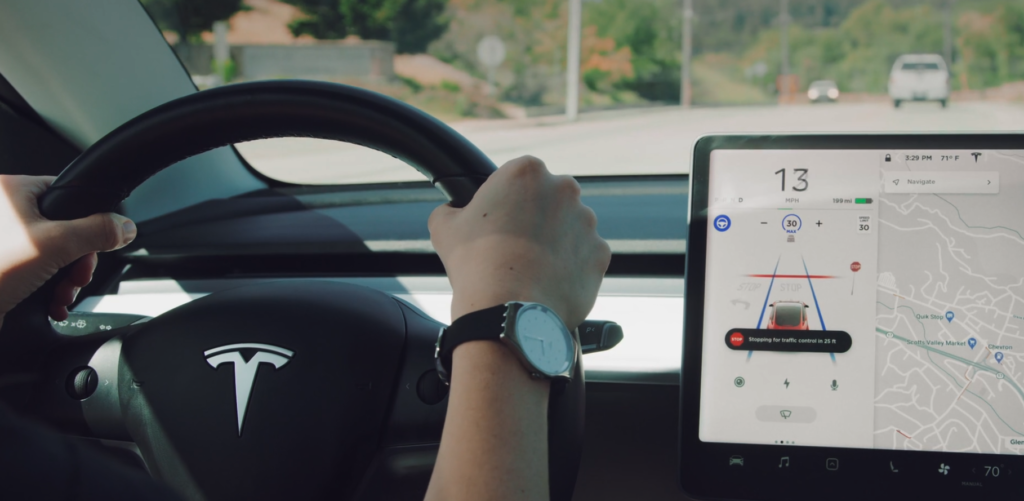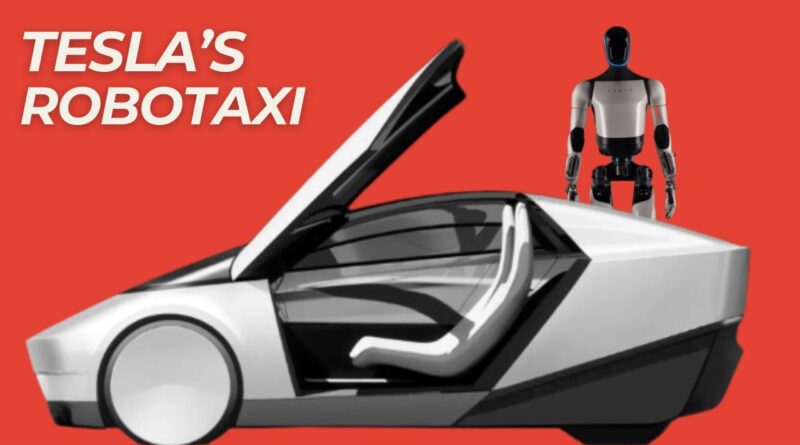Tesla’s Robotaxi Revolution: How Autonomous Vehicles Will Transform Urban Mobility
Introduction
The future of transportation is poised to undergo a monumental shift, driven by advancements in autonomous driving technology and the rise of electric vehicles. Among the frontrunners in this revolution is Tesla, a company that has consistently pushed the boundaries of innovation in the automotive industry. A recent discussion by Kathy Wood on CNBC highlighted an ambitious price target for Tesla, predicated on the successful deployment of a robotaxi platform. This article delves into the complexities, challenges, and opportunities surrounding Tesla’s potential launch of a robotaxi network, examining various facets from technological advancements to market dynamics and competitive strategies.
The Vision of Robo-Taxis
Tesla’s vision of a robo-taxi network represents a significant leap forward in autonomous transportation. The concept involves a fleet of self-driving electric vehicles that operate as on-demand taxis, offering a new level of convenience, efficiency, and safety for urban mobility. This vision is underpinned by Tesla’s Full Self-Driving (FSD) software, which aims to achieve a level of autonomy where vehicles can navigate without human intervention. The promise of robo-taxis includes not only improved urban transportation but also the potential for substantial financial returns, transforming Tesla from an automotive manufacturer to a major player in the mobility-as-a-service market.
Challenges in the Road to Robo-Taxis
Despite the promising outlook, several challenges loom large in the path to realizing a fully operational robo-taxi network. The most significant hurdle is the development and deployment of reliable and safe FSD technology. While Tesla has made considerable progress, the software is not yet fully capable of handling all driving scenarios autonomously. Additionally, regulatory approvals and public acceptance pose substantial challenges. The timeline for achieving these milestones is uncertain, with industry experts divided on how soon true autonomy can be achieved and widely adopted.
The Competitive Landscape
The competitive landscape for autonomous driving and robo-taxis is intense, with several key players vying for dominance. Companies like Waymo, Cruise, and Uber are investing heavily in autonomous technology, each with its unique approach and strategic advantages. Waymo, for example, has been gradually rolling out its autonomous taxi service in select cities, albeit at a slower pace due to the high costs and complexity of its hardware-centric approach. Tesla’s strategy, leveraging its extensive fleet of vehicles equipped with advanced sensors and AI-driven software, aims to outpace competitors by achieving economies of scale and rapid deployment once FSD technology matures.
The Role of AI and FSD in Tesla’s Strategy
Artificial Intelligence (AI) and Full Self-Driving (FSD) software are at the core of Tesla’s robo-taxi strategy. Tesla’s AI-driven approach focuses on developing neural networks capable of learning and improving over time, utilizing vast amounts of data collected from its fleet. This data-centric method contrasts with other companies that rely more heavily on pre-mapped environments and specialized hardware. The continuous improvement in AI and FSD capabilities is critical to achieving the level of safety and reliability necessary for widespread robo-taxi adoption.

Tesla Full Self Driving (FSD) Capabilities
Tesla Insurance: A Strategic Move
An often-overlooked aspect of Tesla’s strategy is its venture into the insurance market. Tesla Insurance not only provides a revenue stream but also plays a strategic role in the deployment of robo-taxis. By offering insurance tailored to autonomous vehicles, Tesla can streamline the process for customers to add their cars to the robo-taxi network. This vertical integration ensures that insurance costs remain manageable and that the transition to a robo-taxi model is as seamless as possible. Moreover, Tesla Insurance can leverage data from the vehicles to offer competitive rates, enhancing the overall value proposition for Tesla owners.
The Network Effect and Market Dynamics
The network effect is a powerful dynamic in the ride-hailing and autonomous driving markets. Companies that achieve a critical mass of vehicles and users can offer more competitive pricing and better service due to the higher density of available rides. Tesla’s existing fleet of millions of vehicles gives it a potential advantage in rapidly establishing a dense network of robo-taxis in urban areas. This density is crucial for reducing wait times and offering lower fares, which are key factors in attracting and retaining customers in the competitive ride-hailing market.
Speeding Up the Rollout
Several factors could accelerate the rollout of Tesla’s robo-taxi network. Firstly, the existing fleet of Tesla vehicles, already equipped with the necessary hardware, can be quickly transitioned to autonomous operation once the software reaches the required level of safety. Secondly, the continuous improvements in AI and machine learning algorithms could lead to rapid advancements in FSD capabilities. Finally, regulatory environments that favor innovation and the deployment of autonomous vehicles could also play a pivotal role. Tesla’s proactive approach in working with regulators and demonstrating the safety of its technology will be crucial in this regard.
The Importance of First-Mover Advantage
Achieving first-mover advantage in the robo-taxi market could provide Tesla with a significant competitive edge. Being the first to deploy a large-scale, fully operational robo-taxi network would allow Tesla to establish brand dominance and customer loyalty. It would also enable Tesla to set industry standards and potentially influence regulatory frameworks. Furthermore, early entry into the market would provide valuable data and insights, allowing Tesla to continuously refine and improve its service, further solidifying its leadership position.
Analysts’ Perspectives and Market Valuation
Despite the promising outlook, many analysts remain cautious in incorporating robo-taxis into their valuation models for Tesla. The primary reason for this cautious approach is the uncertainty surrounding the timeline and feasibility of achieving full autonomy. Analysts specializing in the automotive industry often focus on traditional metrics and may not fully appreciate the transformative potential of autonomous driving and mobility services. However, for investors with a deep understanding of technology and innovation, Tesla’s progress in FSD and robo-taxis represents a significant opportunity for long-term growth.
Conclusion
The journey towards a fully operational robo-taxi network is fraught with challenges but also holds immense promise. Tesla’s strategic initiatives, from FSD development to Tesla Insurance, position it uniquely to capitalize on this emerging market. While uncertainties remain regarding the timeline and competitive landscape, the potential for disruption in urban mobility is undeniable. As Tesla continues to innovate and push the boundaries of autonomous driving, it stands at the forefront of a transportation revolution that could redefine the future of mobility.
This article has explored various aspects of Tesla’s potential robo-taxi network, from technological advancements to market dynamics and strategic considerations. As we look ahead, the next few years will be critical in determining how quickly and effectively Tesla can bring its vision to reality. For now, the excitement and anticipation surrounding this revolutionary concept continue to build, promising a transformative impact on both Tesla and the broader transportation landscape.




